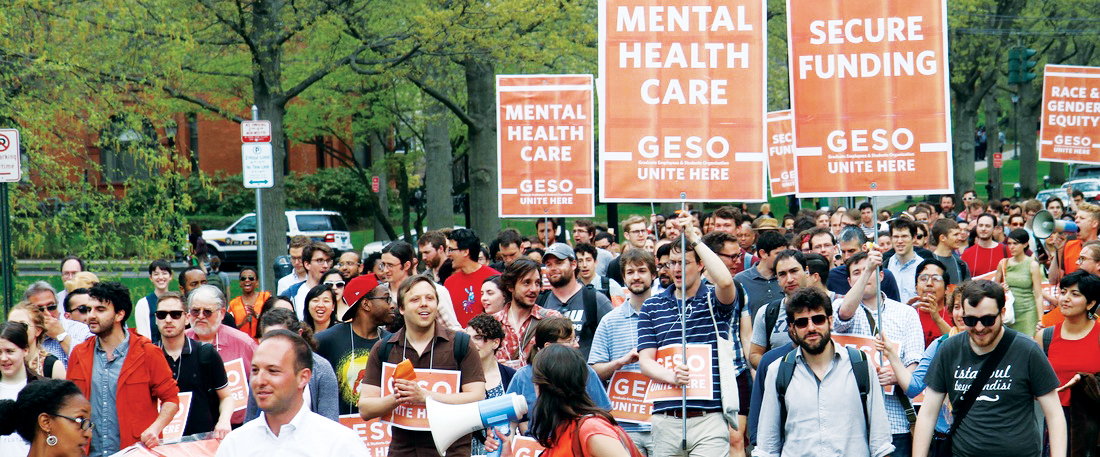
Courtesy Local 33
A closed-door membership meeting for two of Yale’s labors evolved into a demonstration in front of Woodbridge Hall Wednesday night.
Leaders of Local 34 and Local 35 — Yale’s clerical, technical and maintenance worker unions — updated members in Battell Chapel on progress in University contract negotiations and a shift in strategy. The meeting drew more than 1,200 attendees. Many also took part in the subsequent demonstration — an “additional thought” after the original meeting had been planned, said Local 34 Secretary-Treasurer Ken Suzuki.
“When you put 1,200 members together, the members are going to want to act as well,” Suzuki said.
Sukuzi added that the leaders of Local 34 and Local 35 decided to strategically change their negotiating process to step up the pace and the intensity of discussions before the contract expires on Jan. 20, 2017. Labor wage rates are usually discussed after all other issues such as employee benefits have been settled, said Suzuki, a founding member of Local 34. But the unions are currently putting forth proposals on job security and health care benefits at the same time as those concerning wages, resulting in more frequent and extended negotiations with the University, he added.
Local 34 President Laurie Kennington ’01, one of the union’s representatives on the negotiating team, said the University has been “constructive and honest” in the current dialogues, and has become more receptive to the unions’ concerns.
University spokesman Tom Conroy said a number of issues have been resolved as a result of the collective effort between Yale and the unions. Both sides are working regularly on the remaining concerns, Conroy wrote in a Wednesday email to the News. He added that the two parties hope for more progress as negotiations continue before contracts expire.
Kennington identified reduced benefits for future union members and employment stagnation after the new residential colleges are complete as key issues. Kennington said Local 34 and Local 35 are not willing to compromise on the future of incoming union members in order to preserve the existing benefits for current members.
“We update everybody in these regular meetings so everybody really knows where things stand,” Kennington added. “I have been so proud that the membership agrees with our negotiation team, that we are not willing to sell out future members just to keep what we’ve got.”
She added that despite the soon-to-be 20 percent increase in the student population, the University has been cutting Local 34 staffing, which may cause a drop in the quality and quantity of support and service students in the new colleges will receive compared to past standards.
Additionally, though Benjamin Franklin and Murray colleges are soon to open, the University has not hired a proportional increase in service staff in areas such as the libraries, academic and athletic departments, Kennington said.
“We are really committed to roll up ourselves in problem-solving and we hope the University would continue to do the same,” Kennington said.
University employees in clerical or technical positions are automatically considered members of the two unions and are covered by those groups’ contracts.
David Yaffe-Bellany contributed sourcing.
Correction, Nov. 18: An earlier version of this article mistitled Local 33 and 34 as blue-collar unions when in fact they are labor unions.







